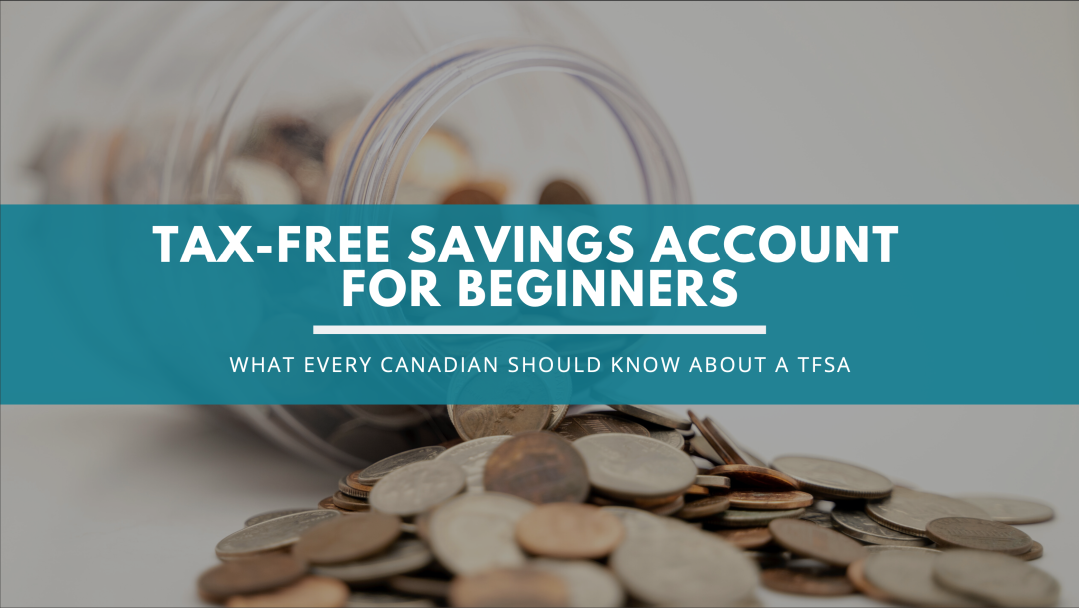When I was a bank teller, I learned that many people had “heard” about a tax-free savings account (TFSA) but did not “know” what it is or how to get started.
What is a TFSA, you ask? It is the BEST way to start saving. Your interest income from your savings will not be taxable by the Canadian government!
Let me say that again: SAVINGS…TAX-FREE!
If you didn’t know, when you earn over a certain bracket in non-registered (regular) savings accounts, you will be held liable for paying your taxes on any capital gains/interest income. Click here for a detailed explanation by Motley Fool.
A TFSA is great because you can save for any purpose (e.g. vacation, car, etc.) and it can take many forms (i.e. mutual funds, direct-investing, basic savings). It is so versatile that you can use it to save and grow your money.
The simplest TFSA works like a regular savings account, and often times provides a higher interest rate than the most basic savings account a bank offers.
So, now that you have heard how great a TFSA is, where do you begin? What do you need to know?
Let’s get started!
Who Can Open a TFSA
Any Canadian citizen or Permanent Resident (PR) holder over the age of 18 can open a tax-free savings. account. For your 18th birthday, get yourself a TFSA!
In special cases, limitations may apply. If you think you might be a special case, it is best to discuss it with a financial advisor or a Canada Revenue Agency (CRA) customer service representative.
How to Open a TFSA
It is very simple to open a TFSA. Book an appointment with a financial advisor at your financial institution (or choose a new one). Bring your valid government ID and SIN number.
If you are comfortable, many banks can help you set up a TFSA online. I would recommend interacting with a financial advisor to get any additional questions answered on the spot!
Contribution Limits
You might be thinking, hmmmm… this sounds too good to be true. What’s the catch?
There isn’t a catch. There are just contribution limits.
These are limits to how much you can put into your TFSA. These contribution limits increase by year and include any withdrawals you made in the previous calendar year. As I mentioned earlier, you can only open a TFSA when you turn 18 (and are a Canadian resident), but you can use the full contribution limit for that year and annual contribution limits can be accumulated from that year.
Here are annual contributions since TFSAs were introduced in 2009:

Feeling a bit overwhelmed? Don’t worry, I got you!
To understand contribution limits, let me walk you through an example.
Bob was born on January 2, 1999 in Canada. On his 21st birthday (which is January 2, 2020), Bob decides to open a TFSA. This means his contribution room (total amount he can put in a TFSA) is $23,000.
Here is a breakdown of this calculation:
Bob turned 18 in 2017. So, Bob would add his contribution limits from 2017 to 2020.
$5,500 + $5,500 + $6,000 + $6,000 = $23,000.00
Now, what if Bob made his TFSA in 2018, deposited $7,000 in 2018 and withdrew $2,000 in 2019? Let’s calculate his new contribution room.
Bob would use this formula to calculate his available contribution room:
Available contribution room = your annual contribution limits – deposits + withdrawals*
*Withdrawals are only added back the next calendar year.
For instance, if you withdraw money from your TFSA today, that withdrawal will not be able to increase your contribution room until the next calander year.
In Bob’s case:
$5,500 +$5,500 + $6,000 + $6,000 – $7,000 + $2,000 = $18,000.00
Bob’s contribution room is $18,000 today.
How to Confirm your Contribution Room
Your financial advisor or accountant may be able to provide an estimate for you. However, the best way to check is through the CRA. You can contact the CRA via phone (1-800-267-6999) or sign-up to view all your tax information online.
I hope this post has helped you learn the basics of a tax-free savings account. Remember to be mindful of your contribution limits but never overwhelmed. A TFSA is a great tool to save and can be used in many different ways.
Please ask any questions below or speak with your financial advisor when you open your TFSA. You can also visit the CRA website for more information.
Subscribe for more posts like this and happy saving!

